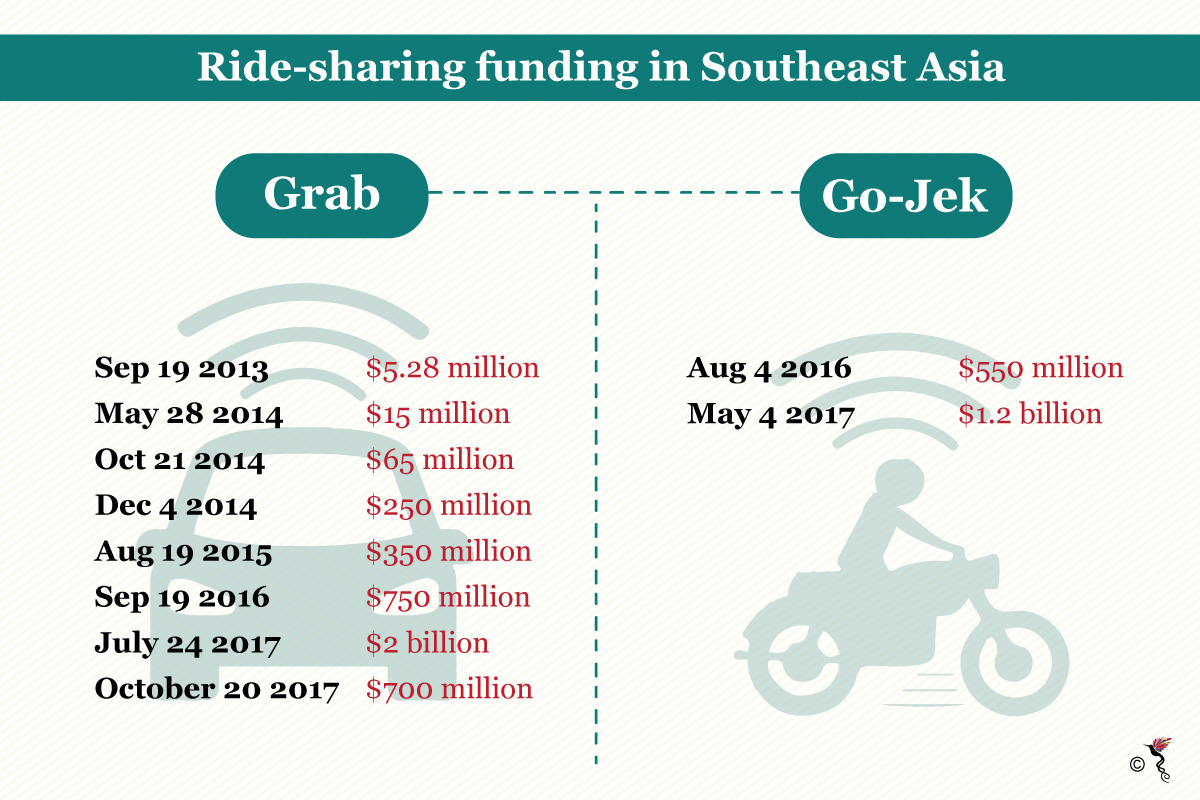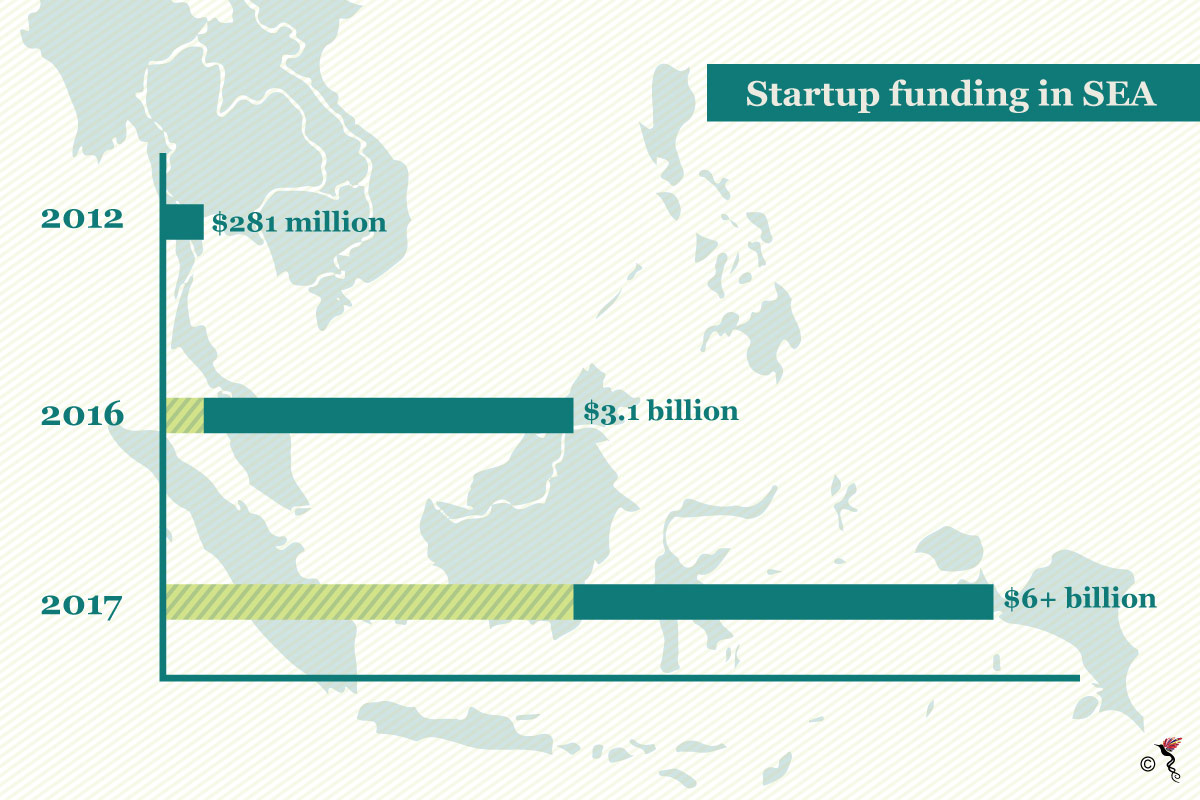We’re in the final few days of 2017, and what a year it’s been for Southeast Asia. We’ve seen unicorns continue to blow up, and also watched iconic personalities become billionaires.
So, what are some of the biggest milestones that will affect the tech landscape in Southeast Asia from 2018 and beyond?
Go-Jek’s Continuing Rise
We’ve given Go-Jek a lot of praise lately, but that’s because they are seriously changing the way business is done in the region – and perceptions of how technology can change the way we live.
The biggest of the year, of course, was Go-Jek receiving $1.2 billion in funding.
After becoming Indonesia’s first unicorn in 2016 and receiving $550 million in funding, founder Nadiem Makarim and his team were not content to rest on their laurels. They continued to innovate their product – which of course carried into 2017.
This year has seen them look at many other business opportunities, and they are taking things like e-payments seriously. They recently bought three fintech firms in a bid to cement their share of Indonesia’s e-payments space.
Makarim isn’t content to stay within Indonesia’s borders, either. After conquering Indonesia’s market of 264 million people, the only way left to expand is outwards. This is not a task that they are afraid of.
Razer founder Min-Liang Tan becomes a billionaire
Video game culture is massive in Southeast Asia, thanks to the popularity of titles like League of Legends, DOTA 2, and Overwatch. Thousands are flocking to arenas to watch their favourite gamers battle each other for supremacy – and there’s no end in sight to the growth of the region’s video game sector.
However, long before gaming exploded in Southeast Asia (and the world), there was already one company that was synonymous with elite gaming performance: Razer.
In 1998, Min-Liang Tan began producing gaming mice geared toward those who wanted to be competitive and needed every advantage that they could get. Almost two decades later, the list of gear sold by Razer has expanded from mice to headsets, keyboards, laptops, mobile phones and even clothing.
While Tan may not have been hurting financially, with some estimating his wealth at $700 million before the IPO, the $530 million IPO in Hong Kong pushed him over the billion-dollar mark.
Money continues to flow into Southeast Asia
Take a moment to imagine this: in 2012, the total amount of money invested into start-ups in Southeast Asia totalled $281 million. It was a decent amount of money, but it certainly wasn’t a harbinger of things to come.
Fast forward to 2016, and suddenly there is $3.1 billion in the market. The lion’s share of this is taken by companies like Grab and Go-Jek, but there is still plenty left for other firms. That means that in less than half a decade, investment numbers increased more than tenfold.
Oh, what a difference a year makes. As of September 2017, Investment numbers had already doubled to over $6 billion - and could break the $7 billion barrier by the end of the year.

That means one thing: investors are bullish on Southeast Asia, and the next few years could be a wild ride for tech start-ups that create interesting products.

Why are investors so gung-ho? Because Southeast Asia continues to exceed expectations. With an increasing mobile-user population (that may reach 330 million by the end of 2017), the internet economy of the region is expected to reach $50 billion this year.
The region has embraced technology and all of the conveniences it adds to peoples’ lives. This isn’t a trend – it’s a simple fact. Now the onus is on technology companies to continue to innovate and find new ways to make life more convenient.
Recommended stories:
